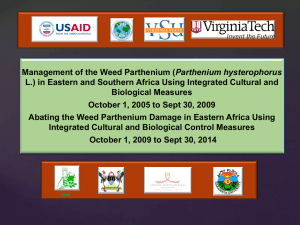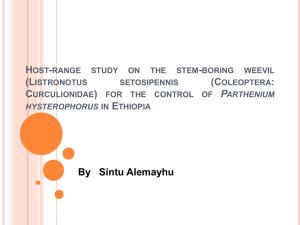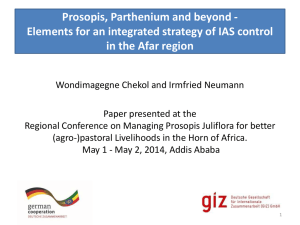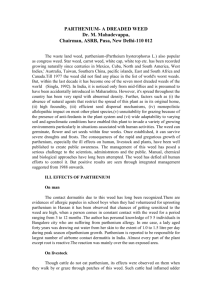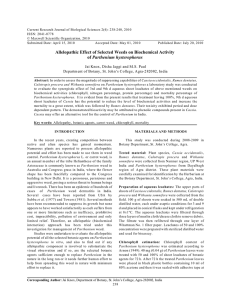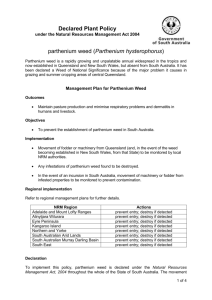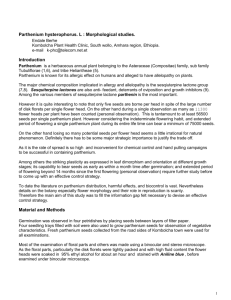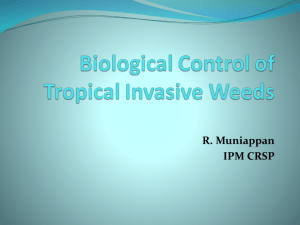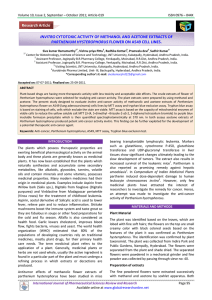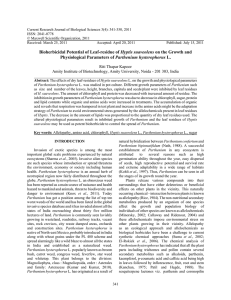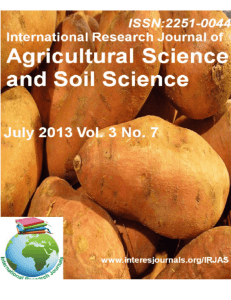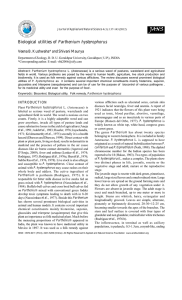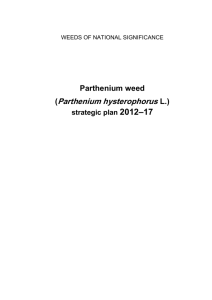09-Bekele
advertisement
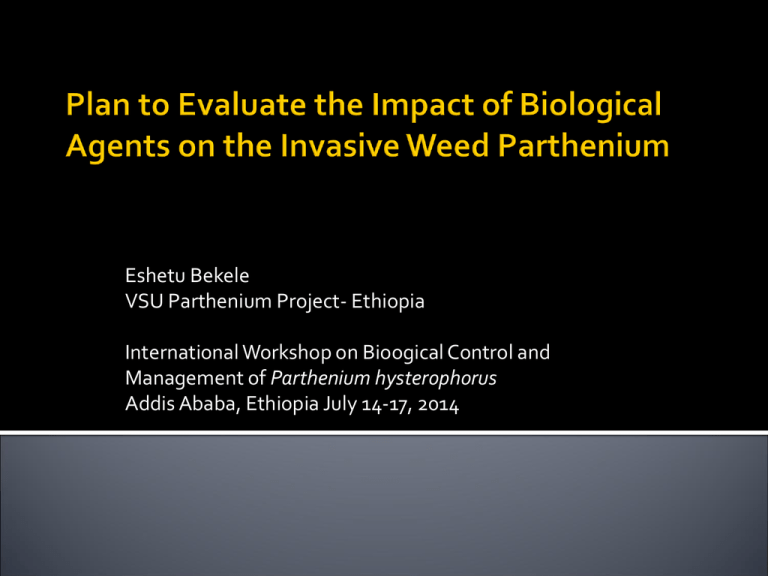
Eshetu Bekele VSU Parthenium Project- Ethiopia International Workshop on Bioogical Control and Management of Parthenium hysterophorus Addis Ababa, Ethiopia July 14-17, 2014 Address most of the adverse effects on ▪ ▪ ▪ ▪ Crops and pastures Livestock health and products Social Natural ecosystems Include appropriate impact assessment plan and parameters Quantify the economic benefits that could be obtained by managing the weed Evaluating pre-release baseline conditions ▪ Provides benchmarks against which effectiveness of the bioagent can be later evaluated Monitoring establishment and spread of the bioagents ▪ This is an indicator of the ultimate success of any biological control program Measuring actual impacts ▪ This actually measures the ultimate success or failure of the biological control program Photo points ▪ Comparison of a series of photographs taken from a fixed reference points ▪ Periodically on release and non-release plots Stakeholder survey ▪ Comparative surveys of perceptions of managers, farmers DAs, etc ▪ A questionnaire to assess their opinions before and after release Comparing sites or plots with and without the bioagents: ▪ ▪ ▪ ▪ Abundance of parthenium Abundance of bioagents Extent of damage Response of the associated plant community Correlative studies: ▪ Correlation between weed performance and agent density or damage severity Agent exclusion experiments: ▪ Comparison of protected plots (using pesticides or cages) with plots with the bioagents. On parthenium: before/during release & end of seasons NP, NF, Ht, BM, SB On bioagent: fortnightly after release & end of seasons (at & beyond the release points) NA, NP, NL, NE per plant Extent of damage: during the season NDP, PLAD, visual score (0-5) Associated plant communities Spp., abundance, and % coverage Data should be taken from a unit area Example: 0.5 x 0.5m quadrant It should be replicated Appropriate statistical models should be selected Example: One way or two way ANOVA followed by a Tukey test (Dhileepan, 2003) Ultimate goal of biological control of parthenium is improvement in crop and pasture yields and qualities. Recovery of native species Reduce the socioeconomic Impacts But, it may take several years to measure such real impact Requires continuous monitoring & data collection Superimposing zonal crop yield data on parthenium distribution map, three major crops identified in potential release areas Teff Sorghum and Maize Yields vary significantly within zones District (wereda) level yields could be better Thus, means of the last 5 seasons used Impact of biological control of parthenium on human health, livestock health and product qualities, net savings/incomes generated Determined using well structured questionnaires. Analyzed with appropriate statistical procedures The impact of managing parthenium by bioagents can be evaluated from different perspectives: the establishment and effectiveness of the bioagents , significant reduction in parthenium populations subsequent increase in crop/pasture yields & quality, Improvements in livestock health and quality of their products, rehabilitation of other plant communities in the ecosystem, and the additional economic benefits farmers could get from reduced weeding costs and labor.
